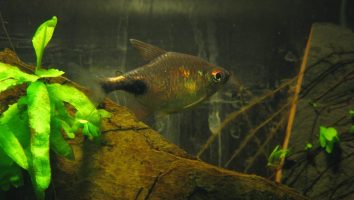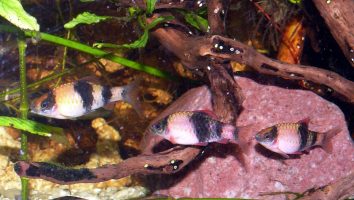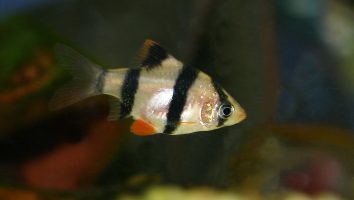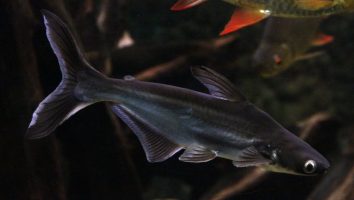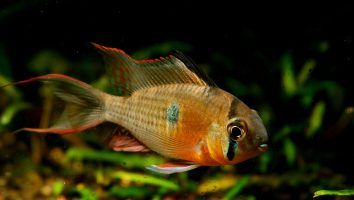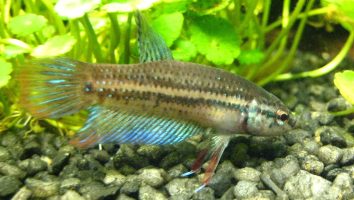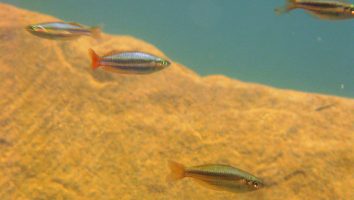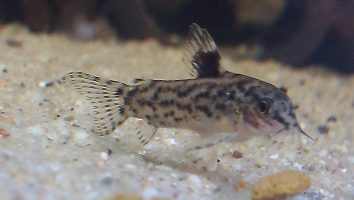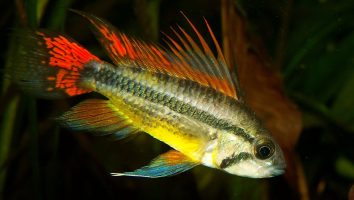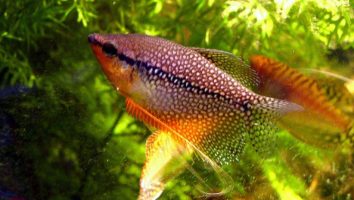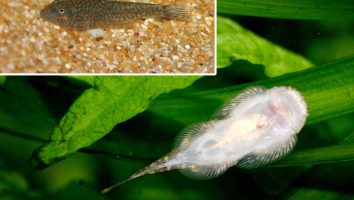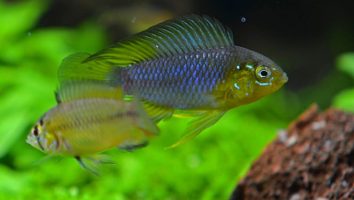The Uaru is a beautiful freshwater fish that is relatively easy to care for. They are a bit more delicate than some other fish though, so you need to be careful when setting up their tank.
This guide will teach you everything you need to know about Uaru care. You’ll learn about their diet, size, lifespan, and more!
Table of contents
Species overview
Uaru (Uaru amphiacanthoides) are a freshwater cichlid that is native to the Amazon Basin in South America.
They are a popular choice for many aquarium hobbyists because of their unique appearance and their relatively peaceful nature.
Uaru are a schooling fish, so it is recommended to keep them in groups of 6 or more. They are also relatively slow-moving, so they do best in tanks with other slow-moving fish.
Because they are native to the Amazon Basin, they are used to living in warm water with a high level of dissolved oxygen.
Appearance
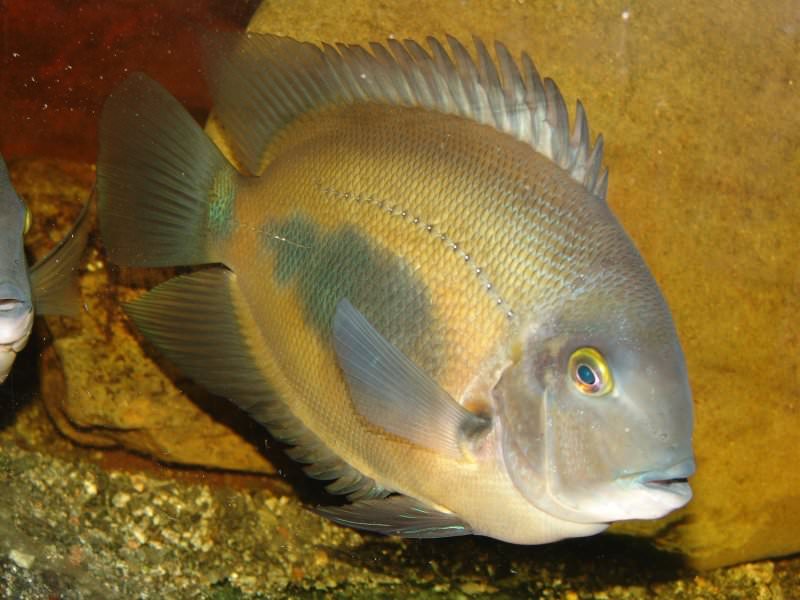
Uaru cichlids are one of the more distinct-looking freshwater fish out there. They have a very triangular head that comes to a point at the nose. This is especially noticeable when looking at them from above.
The body of the Uaru is very round and stocky. They have a very short tail in comparison to the rest of their body.
The fins on this fish are also rather short. The dorsal and anal fins are both low and set back towards the middle/back of the body. The caudal fin is also very short and stubby.
The coloration on this fish is very striking. They are typically a pale yellow/gold color with black spots all over their body. The spots tend to be more concentrated on their dorsal half.
The fins are transparent with a slight yellow tint.
Lifespan
The average lifespan of a Uaru is 10-15 years.
This is a long life expectancy for a fish and is due in part to their natural hardiness. Uarus are also not particularly susceptible to disease, which helps them live longer lives.
Of course, the level of care they receive plays a role in their lifespan as well. If they are kept in poor conditions, their lifespan will be significantly shorter.
Size
Uaru can reach lengths of up to 18 inches, but most Uaru for sale average between 10-12 inches. Females are typically smaller than males.
Tank
Tank Size
The recommended tank size for Uaru cichlids is 500 gallons. This is a very large fish that needs a lot of space to roam and swim.
If you want to keep more than one Uaru in the same tank you’ll need to increase the size of the tank accordingly. We recommend adding at least 250 gallons for each additional fish.
Water Parameters
Uaru are very delicate and require pristine water conditions. They are very sensitive to nitrates and ammonia, and even small spikes in these levels can be fatal.
To ensure the health of your Uaru, it’s important to do regular water changes and to test the water frequently. Ammonia and nitrite should always be at 0 ppm, and nitrate should be as close to 0 ppm as possible.
The following water parameters should help create a healthy environment for your Uaru.
- Water temperature: 72 to 82 degrees Fahrenheit
- pH levels: 6.5 to 7.5
- Water hardness: 2 to 10 dGH
- Alkalinity Levels: 4-8 dKH
What To Put In Their Tank
Uaru are one of the few freshwater aquarium fish that actually do better in a heavily planted tank.
The roots of the plants help provide these fish with a place to hide and feel secure. They also give off a lot of oxygen which is something these fish need in order to thrive.
We recommend using a variety of different plants in their tank. Tall plants, short plants, floating plants, and rooted plants are all good choices.
As for the substrate, you can use just about anything. Gravel, sand, and even soil are all suitable choices. Just make sure it’s not too sharp since these fish like to dig around a bit.
You can also include some driftwood and rocks in their habitat if you want. Just make sure they’re not too big since these fish aren’t the best swimmers.
Common Diseases
Uaru are a fairly hearty and disease-resistant fish. They’re not bulletproof by any means, but they’re certainly not as susceptible to illness as some other freshwater species.
The most common disease that affects this fish is ich. As we’ve mentioned before, ich is a very common freshwater parasite that can quickly become serious if it’s not dealt with.
The most obvious sign of ich is the presence of white spots on the body of your fish. If you notice this, it’s important to take action immediately and begin treatment.
Another disease that can affect the Uaru is hole-in-the-head disease. This is another disease that is caused by poor water quality and the presence of activated carbon in the tank.
This disease presents itself as one or two pits/holes in the skin on the head of your fish. It’s not usually fatal, but it can leave some scarring.
As always, the best way to prevent these fish from getting sick is to maintain the quality of the water in their tank. A tank with clean and stable water conditions always leads to healthier fish who are more resistant to disease.
Behavior & Temperament
The Uaru is a schooling fish, so it’s important to keep at least six of them together. If not, they may become stressed and their health will suffer as a result.
These fish are relatively peaceful, but they can be aggressive toward smaller fish. It’s best to keep them with other fish that are around the same size.
Uaru are also known to be jumpers, so it’s important to have a lid on your tank.
During the day, Uaru will hide in the plants or other decorations in their environment. At night, they’ll come out to feed. You may also see them swimming in the middle of the water column from time to time.
Tank Mates
Uaru are a bit more difficult to keep than other freshwater fish. They come from slow-moving blackwater rivers in South America. As a result, they’re used to very specific water conditions.
This makes finding appropriate tank mates a bit more challenging.
You’ll need to find fish that can tolerate the same water conditions as Uaru. This includes a pH around 6, a water temperature around 80 degrees Fahrenheit, and extremely soft water.
Your best bet is to find other fish from the same region. Some good Uaru tank mates include:
- Biotodoma cupido
- Geophagus Surinamensis
- Satanoperca daemon
- Satanoperca jurupari
- Apistogramma cacatuoides
- Hypancistrus sp.
- Panaque nigrolineatus
Breeding
Uaru cichlids are a bit more difficult to breed in captivity than some other species. They require a very specific environment and diet to trigger spawning.
To start, you need a very large tank. We’re talking at least 100 gallons. The tank should be filled with soft, sandy substrate. There should also be plenty of hiding places and caves. Driftwood and live plants are also recommended.
As for water quality, the pH should be between 6.5 and 7.5. The temperature should be around 82 degrees Fahrenheit.
When it comes to diet, Uaru cichlids are mostly carnivorous. In the wild, they eat small invertebrates and fish. To recreate that diet, you can feed them live foods like brine shrimp and bloodworms. You can also give them pellets and flakes designed for cichlids.
Once the tank is set up and the fish are acclimated, you can start trying to trigger spawning. The best way to do that is to mimic the rainy season in the wild. To do that, you need to make some major changes to the tank.
First, raise the water level by about a foot. Then, lower the temperature to 77 degrees Fahrenheit. You should also add a lot of plants to the tank.
After about a week, you can start to see results. The female Uaru will lay her eggs on a flat surface like a rock or piece of driftwood. The male will then fertilize them.
Once the eggs are fertilized, the parents will guards them diligently. They will also fan them with their fins to keep them oxygenated.
The eggs will hatch in about two weeks. At that point, you can remove the parents and start feeding the fry live foods. Baby brine shrimp and bloodworms are a good place to start. As they grow, you can transition them to pellets and flakes.
Conclusion
The Uaru is an absolutely gorgeous fish that is perfect for the intermediate to advanced aquarium keeper.
They’re not the easiest fish to keep, but they’re definitely worth the effort.
If you’re looking for a fish that is both beautiful and a challenge, the Uaru is the perfect fish for you!

